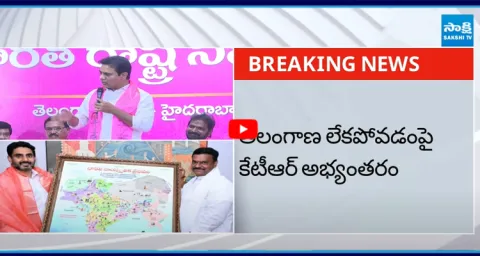
జంతుశాస్త్రం
Introduction: Unit - II Covers two Vital systems of Human beings... They are circulatory system and excretory system.
Human Anatomy & Physiology - II
A) Body fluids & circulation
B) Excretory Products & Their Elimination
Introduction:
Unit - II Covers two Vital systems of Human beings... They are circulatory system and excretory system.
* Circulatory system helps in carrying of nutrients and oxygen to body parts, collection of carbon dioxide from tissues and various waste products from tissues towards excretory organs.
* Pumping station of circulatory system is heart.
* Elimination of nitrogenous waste materials from the body is excretion.
* Kidneys are chief excretory organs in man.
* Kidneys maintain homeostasis of body fluids and their concentration.
* As both the circulatory system and excretory system are vital for human beings, as medical aspirants, students should prepare these topics with interest and enthusiasm which helps them in future courses also.
* Disorders of circulatory system and excretory system are given. This preparation also helps the students very much.
Body fluids and circulation:
* Lymphatic system is an open circulatory system.
* Extracellular fluid is referred to as lymph after that fluid enters the lymphatic capillaries.
* Lymph capillaries merge and form lymphatic vessels which lead into lymph ducts.
* Lymph from left side of the body reaches the venous system at the junction of left internal jugular vein and left sub clavian vein.
* Lymph from the right side of the body reaches the venous system at the junction of the right sub clavian vein and internal jugular vein.
* Haemostasis is the stoppage of loss of blood by allowing it for coagulation or clot.
* Clotting involves three steps like formation of prothrombin activator, conversion of inactive prothrombin into active thrombin and formation of clot by fibrin fibres.
Note: Students should learn the sequence of blood clotting factors from factor I to factor XIII for all types of competitive exams.
* Anticoagulants are heparin, warfarin.
* Clotting in blood banks is prevented by the addition of citrates or oxalates of sodium or Ethylene diamine tetra acetic acid (EDTA).
* Open type of circulatory system is present in arthropods, leeches, mollusks, echinoderms and ascidians.
* Closed type of blood vascular system is present in annelids, cephalopods, cephalochordates and all the vertebrates.
* Fishes have a 2- chambered heart and show single circulation.
* Amphibians have 3- chambered heart and show incomplete double circulation.
* Reptiles have 2 atria and incom- pletely divided ventricle and show incomplete double circu- lation.
* Aves and mammals have 4 chambered hearts with 2 atria and 2 ventricles each and show complete double circulation.
* Heart in man present in mediastinum between the two lungs in thoracic cavity.
* Double walled pericardium with outer fibrous and inner serous layers covers the heart.
* Wall of heart has outer epicardium, middle myocardium and inner endocardium.
* Atria and ventricles are separated by a deep transverse groove coronary sulcus.
* Foramen ovale is a small pore present in the atrial septum in foetal heart.
Types of valves in heart are..
1. Valve of Thebesius
Location: Opening of coronary sinus into right atrium
2. Eustachian valve/ valve of inferior vena cava
Location: Opening of post caval vein into right atrium
3. Bicuspid valve (Mitral valve)
Location: Opening between left atrium and left ventricle
4. Tricuspid valve
Location: Opening between right atrium and right ventricle
5. Aortic valve
Location: Origin of systemic arch from left ventricle
6. Pulmonary valve
Location: Origin of pulmonary from right ventricle
Note: Students should remember about the terms like columnae carneae/trabeculae carneae, papillary muscles and chordate tendineae/ heart strings along with their significance.
* Cardiac cycle consists of three phases like atrial systole, ventricular systole and cardiac diastole.
Sequence of nodal tissue is..
Sinoatrial node(SAN)
(pacemaker) ® Atrioventricular node(AVN)(relay point) ® right and left bundle brances ® Purkinji fibres into musculature of ventricles.
* Two types of heart sounds are 'Lub' and 'Dup'..
* Lub sound is formed by the closure of AV valves after ventricular systole.
* Dup sound is formed by closure of semilunar valves after the relaxation of ventricles.
* Stroke volume is the volume of blood pumped out by each ventricle for each heart beat. It is 70 ml.
* Cardiac output is the volume of blood pumped out by the heart from each ventricle per minute. It is about 5 litres.
* Double circulation includes pulmonary and systemic circulation.
* Arterises have two elastic laminae one on either side of muscle layer while veins have only one elastic lamina inner to muscle layer. So arteries are more elastic than veins.
* Epinephrine and nor epinephrine of adrenal medulla increase the cardiac output.
* Thyroxine increases the heart rate and cardiac output.
* Disorders of circulatory system are hypertension or blood pressure, coronary artery disease (CAD), Angina Pectoris, Heart failure because of Myocardial infarction/ heart attack.
Excretory fluids and their Elimination
* Ammonotelism is shown by bony fishes and many lower invertebrates.
* Ureotelism is shown by earthworms, cartilaginous fishes, most of the amphibians and mammals.
* Uricotelism is shown by sauropsids (reptiles and birds) and tracheate arthropods.
Types of Excretory Organs
1. Protonephridia
Present In: Platyhelminthes, rotifers, some annelids, larvae of molluscans, lancelets.
2. metanephridia
Present In: Most annelids
3. Malpighian tubules
Present In: Insects, terrestrial arthropods
4. Antennary glands/green glands
Present In: Crustacean arthropods
5. coxal glands
Present In: arachnids
6. Kidneys and pericardial glands
Present In: molluscs













